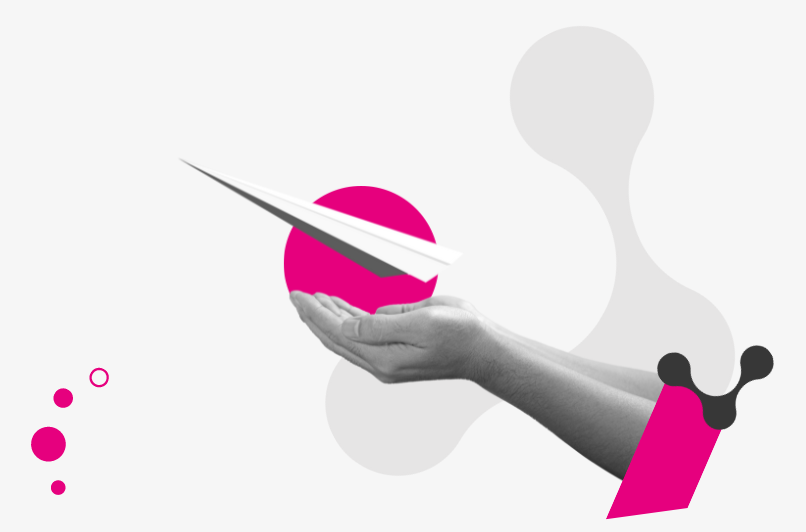Why do people unsubscribe?
Wondering why users unsubscribe from your newsletter? There can be many reasons, and the most common ones are:
- Irrelevant Content: One of the main reasons subscribers unsubscribe is receiving content that no longer aligns with their interests. If your emails consistently fail to meet their expectations, subscribers will often use the „unsubscribe” button.
- Too Many Emails: Bombarding your subscribers with too many emails can be overwhelming. Personally, I unsubscribe if I receive too many emails. Test frequency: a rise in unsubscribe rates often indicates that your base has reached its limit.
- Generic Content: Subscribers expect content tailored to their specific needs and preferences. If your emails seem generic and lack personalization, subscribers may lose interest and unsubscribe. Personalization goes beyond just adding „Hi {name}.”
- Poor Design: Emails that are unattractive, difficult to read, or not optimized for mobile devices can frustrate subscribers and lead to higher unsubscribe rates. An attractive visual experience is crucial for maintaining subscriber engagement.
- Inappropriate Frequency and Timing: Balancing the frequency and timing of your email sends is critical. Too many emails in a short period or sending them at inconvenient times can irritate subscribers and lead to unsubscribes. Test different combinations.
Use the above points as a checklist. Identify the strengths of your email campaigns and areas that need optimization. If you’re experiencing a high unsubscribe rate, follow the steps below to address the issue.
Improving Email Content and Design
Sounds simple, but how to do it and what to focus on?Start by analyzing who your audience is and what they expect—this is key to higher open rates and greater engagement. Test, review, and focus on aesthetics!
- Deliver Value: Understand your subscribers’ needs, interests, and daily challenges, and tailor your content to address them effectively. Share knowledge, become their primary advisor and expert. How to do this? a few ideas:
- Post-Purchase Survey: Send a survey to customers after a purchase to ask about their preferences, what they liked, and what they were dissatisfied with. They might have suggestions for improvement.
- Review Previous Sends: Analyze past email campaigns to see which topics were most opened and clicked.
- Check Visitor Data: Use tools like Google Analytics to see which pages customers visit most frequently.
- Encourage Feedback: Ask directly in emails about what other content users would like to receive (and make sure to read and respond to these emails—otherwise, the effect will be counterproductive).
- Test Email Subjects: Wondering why users unsubscribe from your newsletter? There can be many reasons, and the most common ones are: Attract subscribers with compelling subject lines that encourage them to read the content. Avoid clickbait tactics and focus on delivering what you promise in the subject line. The subject line sells the open.
How to do it?
- A/B Testing: Send two versions of an email to your base and analyze which one achieves the desired goal. Besides the subject line, test preheaders, copy, graphics, button colors, CTA buttons, email layout, etc. Test only one element at a time to get reliable results.
- Automation Testing: Communication tests are often conducted in automations. For mass email testing, you can test on 10% of the base and send the winning version to the rest of the recipients.
- Analyze Past Campaigns: Review previous campaigns that had the best conversion rates and analyze if there was a common element affecting the results.
- One Email = One CTA: Avoid cramming multiple pieces of information into one email. Guide users through the message so that they are clear about what to do or where to click at the end. Focus on copy and email structure. Buttons, links, and images should all direct subscribers to the same place.
- Visual Appeal: Use visually appealing design elements like high-quality images, well-designed templates, and consistent branding. Engaging visual elements can capture subscribers’ attention and encourage them to read the content. Ensure that graphic elements are linked—logos, social media icons, images in the email.
Personalizing the Message
Marketers emphasize personalization for a reason. How to do this effectively without spending too much time while noticeably improving content quality?
- Segment Your List: Segment your mailing list based on demographic data, preferences, or purchase history. Combining this with monitoring visits to specific products, categories, or brands helps build a comprehensive profile of each customer. This knowledge allows for more personalized content delivery, enhancing message value and customer loyalty.
- Use Dynamic Content Blocks: Personalize emails based on individual subscriber data. Tailor communication or offers based on previous interactions, purchase history, or preferences.
- Personalized Recommendations (E-commerce): Use subscriber data to deliver personalized product recommendations. This improves user experience and increases the likelihood of the desired action.
Optimizing Send Frequency
How often should you send emails? Unfortunately, there is no single optimal answer, so it’s worth testing, monitoring, and letting subscribers express their preferences.
- Test and Monitor: Experiment with different email sending frequencies and monitor engagement metrics to determine the optimal frequency. Find a balance that keeps subscribers engaged without overwhelming them.
- Preference Center: Offer subscribers the option to choose their preferred email frequency or content types. Ideally, do this during the registration process or through a preference center link in every email footer. Allowing users to adjust frequency can reduce unsubscribe rates.
Pro tip: finally, set clear expectations. Clearly communicate the frequency, type, and content of messages. Be realistic (it doesn’t matter that you like receiving two emails a day—you’re not the recipient).
An ideal approach is implementing an onboarding series—introducing new subscribers to the brand and clearly stating expectations (the first information should appear upon sign-up!).
Key Takeaways
- Understand Unsubscribe Reasons: If there’s an unsubscribe survey, review the results. Address issues like irrelevant content, excessive emails, lack of personalization, or unattractive design. Continuously monitor and improve based on user feedback.
- Enhance Content and Design: Ask users directly what content they want and in what format. Experiment with different formats, layouts, and content types. Monitor results and adjust communication to meet subscriber needs.
- Personalize Messaging: Segment your mailing list, use dynamic content, and provide personalized product recommendations. Subscribers will appreciate the relevance and stay engaged longer.
- Optimize Frequency: Test different sending times, monitor engagement metrics, and allow users to choose their preferred email frequency. Don’t fear unsubscribes—they indicate areas for improvement.
– **Test, Test, Test:** Continuously test various elements of your email campaigns to refine and optimize performance.

About the author
Michał Kosałka
Marketing Automation Team Leader
He has over 20 years of experience in creating marketing strategies for small and medium-sized companies. He specializes in automating marketing and sales processes and creating and analyzing online and offline marketing campaigns.

